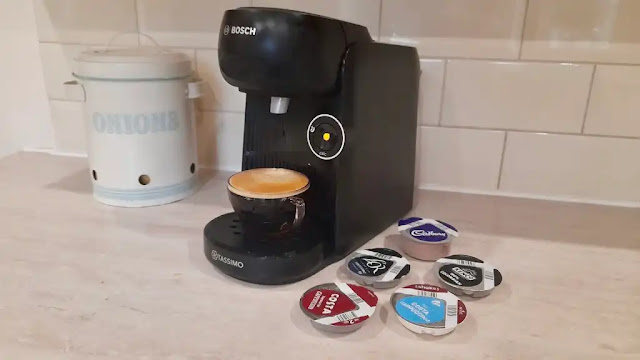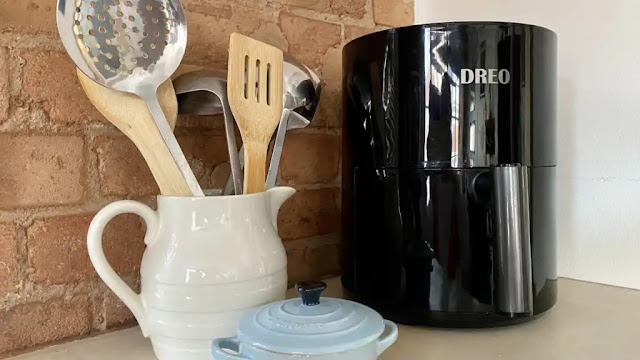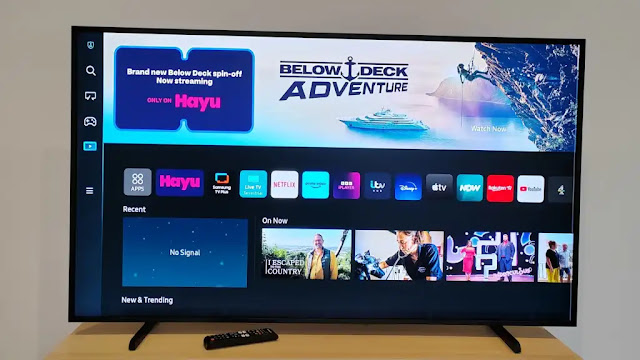The Xbox Series S delivers most of the benefits of the Series X at almost half the price, making it the best Xbox for most of us.
Should I Buy The Xbox Series S?
Pros
- Stunning, compact design
- SSD drive
- Fantastic value
Cons
- No 4K support
- No disc drive
- Only 512GB storage
Our Verdict
- For most people the Xbox Series S is the console to buy right now. You get next-gen's biggest advancement – the SSD – along with a consistent performance boost, a living room-friendly design, and that shiny happy feeling of buying new consumer goods.
- You probably don’t need it right now – there's no exclusive games for it anyway – but whenever you’re ready to make the jump to next-gen, the Xbox Series S is the Xbox to beat.
Price When Reviewed
- $299.99
The Xbox Series S is the little console that could. It’s half the size – and price – of the flagship Series X, but promises to play all the same games, with most of the same performance. What gives?
Well, the disc drive for one – there isn’t one here. You’ll have to put up with a smaller hard drive too, and give up on hitting 4K. But if those trade-offs don’t sound too bad, then oh boy do I have the Xbox for you.
Design & Build
The Xbox Series S is the best looking console of this upcoming generation, and one of the best ever.
For starters, it’s a dinky little thing. At 6.5x15.1x27.5cm the Series S is small by any standards, and positively miniscule compared to the Series X and PS5. Unlike the X it’s also a traditional console shape, meaning it’ll fit wherever you currently keep your console of choice – no need to redecorate your living room for this one.
Finished in white, with a prominent black disc where the heat exhausts, the Series S is also more striking than its big brother. It’s a design that feels like a statement, but not an obnoxious one (*cough* PS5 *cough*).
Like the Series S, it’s designed to either stand vertically or lie on its side, so you’ve got options when it comes to placing it.
You’ll find a single USB 3.1 port on the console’s front, with another two at the rear – though no USB-C. They’re joined by HDMI 2.1, ethernet, the power socket, and a new port for expandable storage – more on that later.
Of course, there’s one big omission here: a disc drive. This is a big part of how Microsoft has kept the Series S both cheap and compact, but there are obvious downsides. It means you can’t use the Series S as a Blu-ray player, you miss out on backwards compatibility with any old discs you have, and you’re stuck paying the premium for digital games for the rest of the console’s life.
I think for many people these downsides will be worth the saving – and don’t worry, even if digital games usually cost a bit more you’d have to buy a lot of games to make up the price difference between this and the Series X. Still, factor it in.
There’s not a huge amount else to say about how the Series S looks, except that I’m a fan of it, and I reckon most people will be. Unlike the Series X it feels designed to be accommodating to people’s living room and TV setups, able to seamlessly replace whatever you currently have with minimum fuss.
Controller
If the console is a seamless transition, then the controller is even more so. Microsoft has chosen not to reinvent the wheel with its gamepad, though there are subtle improvements across the board.
The controller here – identical to the one that ships with the Series X, except white rather than black – is roughly the same size and shape as the familiar Xbox One pads, only with slightly re-curved grips, now improved by a dotted, textured finish for extra grippiness.
A new Share button gives you a quick and easy way to take screenshots and videos while playing, and the D-pad has had a substantial rework. It’s now circular, optimal for rolling across it in fighting games – really the only modern genre where D-pad performance is really significant.
Microsoft also includes the ability to remap many of the controller’s buttons, a welcome touch for accessibility from the company that still leads the pack here by a comfortable margin. Note also that every port on the console is marked by a raised point for the visually impaired.
There is one fatal flaw to the controller, and it’s a familiar one: AA batteries. While Microsoft has switched the controller’s port to USB-C, you still can’t actually use that to charge it unless you drop £20/$20 on a rechargeable battery pack. Otherwise it’s disposable AAs all the way, which is frankly absurd in 2020.
Specs & performance
So this is what really matters – what does the Series X do that the Series S doesn’t?
The big one, as I’ve already mentioned, is 4K. With less RAM, an underclocked CPU, and a significantly slower GPU, the Series S is not designed for 4K gaming.
It can do it, and developers have the option of enabling 4K, but in practice this will only happen with games that otherwise aren’t graphically demanding. The rest of the time, Microsoft says the performance target is 1440p, though there’s scalar rendering tech to ‘fake’ 4K by upscaling when the console is connected to a 4K TV.
What does that mean in practice? Most games will be at 1440p or even 1080p – even at launch, Sea of Thieves, which has been optimised for the new hardware, is only delivering 1080p on the Series S. If your TV is HD then this doesn’t matter a jot. If your TV is 4K, then most games will be upscaled to 4K anyway, and unless you have a keen eye you probably won’t be able to tell the difference.
Curiously, the Series S is actually less powerful than the current Xbox One X in certain respects, which means it won’t play the versions of games enhanced for that console. It means One X owners have very little reason to jump from that console to this – though anyone on an Xbox One or One S will still see a performance jump.
That’s mostly because instead of promising 4K, Microsoft has emphasised that the Series S should solidly deliver 60 frames per second, with the capability to go up to 120fps – though very few TVs support 120Hz yet, so you’re unlikely to see this specific benefit.
Remember that I said Sea of Thieves runs at 1080p? That’s because it’s 1080p but locked in at 60fps, whereas it was only 30fps last-gen. It’s a similar story with many games on the Series S, while Gears 5 goes further and can hit 120fps in its multiplayer mode.
The tradeoff between resolution and framerate is a tricky one. Microsoft has obviously decided that the latter is more important, emphasising smooth game feel over pixel count.
Darting between the Series S and Series X in Forza Horizon 4 I could see the difference in detail, but not by much. Both versions felt equally smooth and fluid though, and after my eyes adjusted to not getting ‘true’ 4K, it didn’t really matter. It felt great to play, and that’s really what Microsoft is pushing here.
That’s also why the Series S shares arguably the biggest technological leap this generation: a solid state drive. This enables significantly faster loading – seconds in most games – as well as the option to switch between supported games and start right where you left off, also within seconds.
In the future games will be designed with SSDs in mind, creating more dynamic and open worlds, theoretically, but for now the benefits are simply to quality of life. You’ll spend less time on loading screens or hitting ‘A’ to get through start-up menus, and a lot more time actually playing.
This is also the third and final limitation of the Series S: storage. It only has a 512GB drive, compared to 1TB in the Series X. Factor in the OS and you’re looking at just over 350GB of usable storage space, which is somewhere between five and ten modern AAA games – and as few as two or three if they’re Call of Duties.
If you’re thinking you’ll just plug in an external hard drive get some extra space, think again. It’s a little more complicated than that. Microsoft’s slick new SSD is faster than USB, which means any external drive will be too slow – which causes problems when games have been optimised for those SSD speeds.
You can fill any USB 3.0 or faster external drive with older games – anything from the Xbox One or earlier – and play from it no problem. But anything that’s been optimised for the Series S & X needs to be installed on the internal drive. Your other option is to store some games externally and move them back and forth - it only takes five minutes or so to transfer even an 80GB game like Forza, so if you don’t mind the inconvenience this is the most efficient approach.
Storage capacity aside, the SSD remains the new Xbox’s killer feature. It’s the main reason to upgrade right now, and with the Series S getting the exact same performance as its big sibling, it’s a massive point in favour of the cheaper console.
Games & Software
Microsoft has given both Xboxes a visual overhaul and a new user interface. It’s an improvement, but at the end of the day still a little clunky. Like most consoles, it takes a few too many button presses to get where you want to go, and too much screen real estate remains devoted to ads trying to lure you into the game store. Plus, it’s Microsoft, so you get Skype and Edge whether you like it or not.
Luckily, Microsoft has improved integration with the updated Xbox smartphone app. You can now use this not only for the console’s initial setup, but also to manage storage space and install games, share screenshots and videos, chat to friends, and even stream games from the console to your phone.
Phones are simply better than game controllers for an awful lot of tasks, so this is a welcome move, and it takes some of the emphasis away from the flaws of the main OS. After all, if it bothers you that much, just switch to your smartphone.
What about games? The Series S plays absolutely everything that the Series X does, so you shouldn’t miss out on anything. That means every optimised title for the new consoles, but also almost every previous Xbox game from the first console on – with the notable exception of anything that relies on the ill-fated Kinect peripheral, not supported here.
It’s a good thing that giant back catalogue is there, because the Xbox Series S & X have no exclusives at all at launch. Anything you can play here you can also play either on PS5, or on an existing Xbox One. That’s likely to stay the case for a while too, with Microsoft promising cross-gen support for at least a year or two.
It means there’s no urgency to jump generations, no rush for the new hardware. The Series S doesn’t play any games your current console can't – it'll just load those games a bit (a lot) faster, and probably play them at higher frame rates.
Eventually there will of course be exclusives. While Halo Infinite is still expected to be cross-generation, at some point we’ll see Gears 6 or Forza 8 maybe even a new Bethesda game that’s exclusive to the Series X and S. But that’s a while off, and in the short term Sony has PS5 exclusives right now and in 2021, from Demon’s Souls and Ratchet & Clank to God of War 2.
To combat that, Microsoft has Game Pass. It’s a killer app already, but feels even more so on the value-led Series S. Pay £249/$299 for a console, then £7.99/$9.99 a month on Game Pass and never buy a game again, with day-one access to Microsoft’s biggest titles and a colossal library of older games, both first- and third-party.
Price & Availability
And value really is the key here. At £249/$299 the Xbox Series S is comfortably the cheapest device in the new console generation – the PS5 Digital Edition just can’t match it for value at £359/$399, while the Xbox Series X is almost double at £449/$499.
If you prefer, you can also buy the Series S on a subscription model through Xbox All Access for £20.99/$24.99 per month for two years, which includes Game Pass Ultimate. Assuming you want Game Pass this works out slightly cheaper in the long run, but of course bear in mind that you're taking a risk on your credit score if you're unable to make the payments down the line.
Verdict
If you have a giant disc-based back catalogue, are confident you can spot the difference between true 4K and its upscaled equivalent, or are already getting heart palpitations thinking about only having 512GB of storage space, then the Series X may well be worth the extra expenditure.
But for most people the Xbox Series S is the console to buy right now. You get next-gen's biggest advancement – the SSD – along with a consistent performance boost, a living room-friendly design, and that shiny happy feeling of buying new consumer goods.
It also feels perfectly designed to serve as a second console, as the Xbox for people who also have a PS5, and know they can get the Sony exclusives and multi-platform games over there while paying pennies for Game Pass on the Series S.
You probably don’t need it right now – there's no exclusive games for it anyway – but whenever you’re ready to make the jump to next-gen, the Xbox Series S is the Xbox to beat.
Specs
- CPU: 8-Cores, 3.6GHz, custom Zen 2
- GPU: 4 Teraflops, 20 CUs, 1.56GHz, custom AMD RDNA 2
- Memory: 10GB GDDR6
- Storage: 512GB NVMe SSD
- Expandable: Seagate Expansion Card (1TB) or USB 3.1 external HDD
- Video output: Up to 1440p at 120fps
- Ports: HDMI 2.1, 3x USB 3.1 gen 1, Ethernet
- Wireless: Dual-band 802.11ac Wi-Fi 5
- HDMI features: Auto low latency, variable refresh rate, AMD FreeSync
- Sound: L-PCM, up to 7.1, Dolby Digital 5.1, DTS 5.1, Dolby TrueHD with Atmos
- Dimensions: 151x275x65mm
- Weight 1.9kg



























%20Review.webp)

0 comments:
Post a Comment